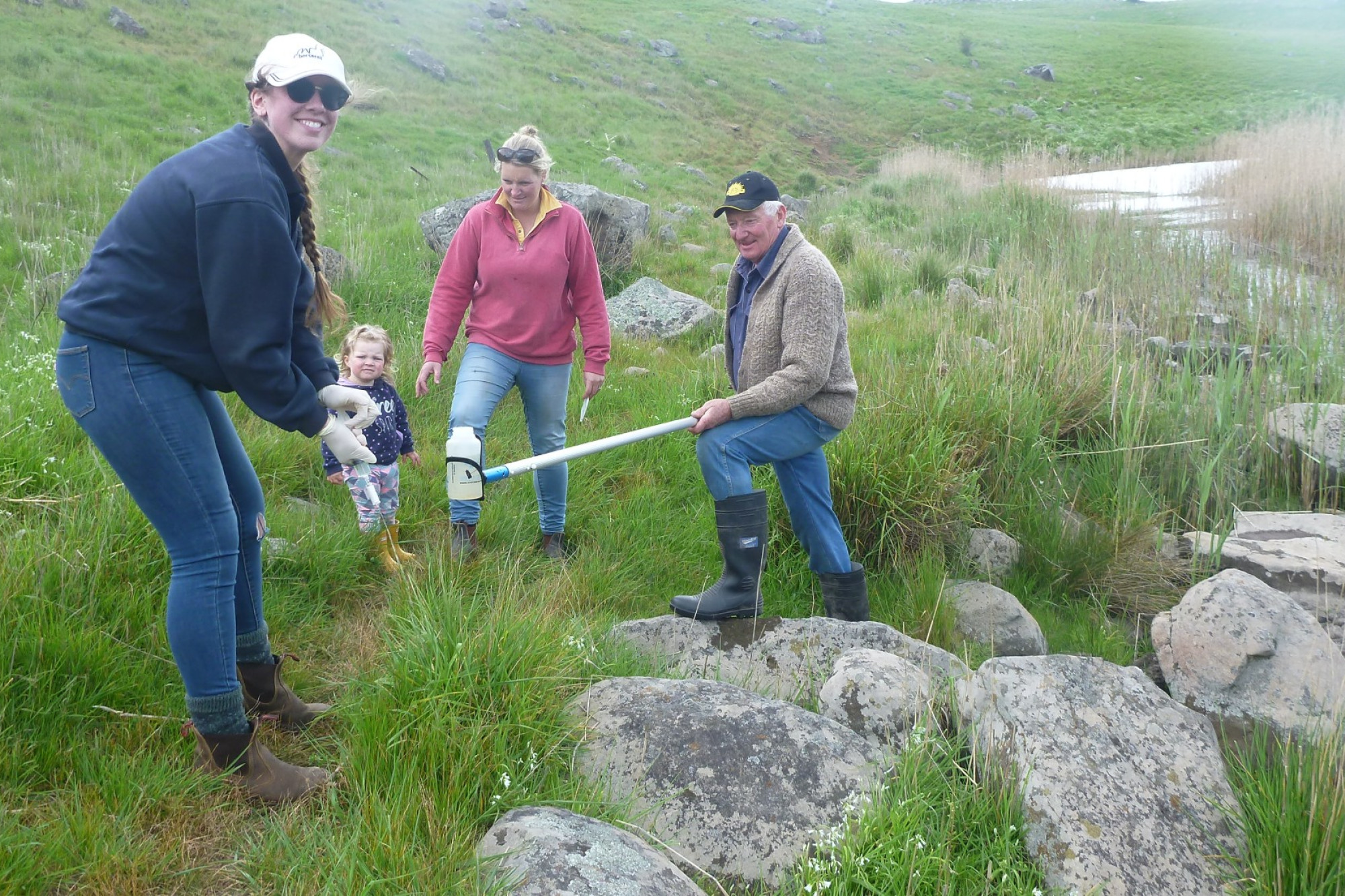General News
24 February, 2020
Mount Emu Creek DNA confirms at least 50 species
THE fauna make-up of Mount Emu Creek became a lot clearer this month after new water testing samples confirmed the presence of at least 50 different species in and around the waterway.

THE fauna make-up of Mount Emu Creek became a lot clearer this month after new water testing samples confirmed the presence of at least 50 different species in and around the waterway.
Itemised through modern-day eDNA testing techniques, the creek was found to have 11 different fish species, four amphibians, 18 birds, 16 mammals and one reptile living within its waters or the immediate surrounds.
The Lismore Land Protection Group (LLPG) was behind the test project, enlisting the help of Derrinallum P-12 College students and interested volunteers to take about 90 water samples over an 80 kilometre stretch of the creek from Darlington in the south to Skipton in the north.
LLPG co-ordinator Rod Eldridge said three samples from 30 different sites about two kilometres apart were taken.
“The process involved forcing the water samples through a set of filters and then using those filters to match against a central DNA database of thousands of species,” he said.
“DNA has been collected from the hair, faeces and urine of all the different species in the database and scanned against the DNA found in our water samples.”
Mr Eldridge said platypuses were found at 13 different sites.
“We’re pretty pleased with that finding because the decline in platypuses is becoming a concern throughout New South Wales because of the ongoing drought and their numbers are also declining in the Yarra Ranges,” he said.
“The eDNA sampling showed they seem to be more prevalent around the more grassy riparian areas, with overhanging foliage.”
Seven sites also confirmed the presence of native water rats, concentrated predominately around the Darlington end.
Mr Eldridge said four species of native frog were identified along the entire river, including the growling grass frog, southern banjo frog, spotted marsh frog and Sudell’s frog.
“In terms of native fish, a few isolated populations of dwarf galaxis were identified, although flathead gudgeons were common right along the whole creek,” he said.
“Small populations of variegated pygmy perch were also found, though, because they are not know to be in this area, they are probably more likely to be Yarra pygmy perch.
“Small long neck turtles were also identified for the whole length of the creek.”
Mr Eldridge said the eDNA results would give a baseline for future long-term monitoring.
“The findings also mean future surveys can better pinpoint the areas to find particular species,” he said.
“We can also start to look at the data and compare the particular characteristics of the creek, such as whether it is more grassy with overhanging trees, to better understand where specific species are found.
“Up until now we would only get this kind of data through specific field surveys targeting specific species, and that is time consuming and expensive work with limited results.
“The eDNA method is much quicker, more cost effective and gives much more sweeping results.”
As expected the water sampling also revealed the presence of cows, dogs, cats, kangaroos, possoms, sheep and rabbits in the area.
Surprise results also revealed a small number of readings for Sambar deer and pigs.
Mr Eldridge said a second survey would be taken towards the end of August, with volunteers invited to join in.
Interested people can contact the Lismore Land Protection Group office on 5596 2384.